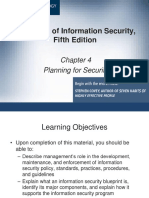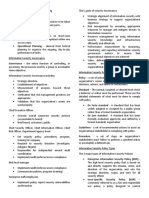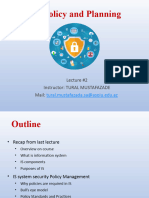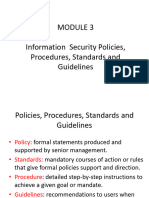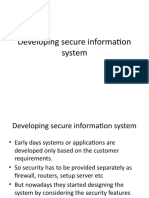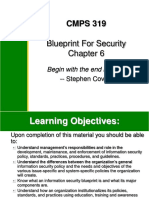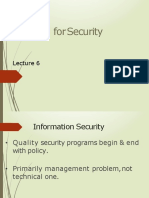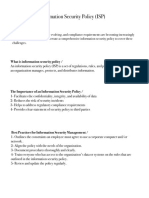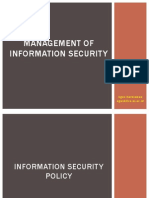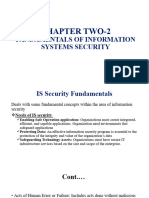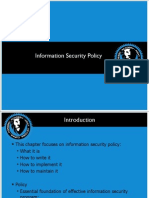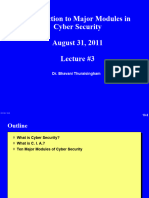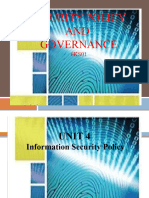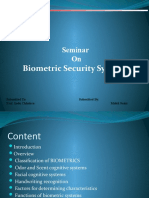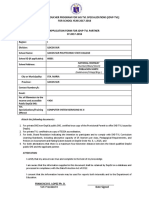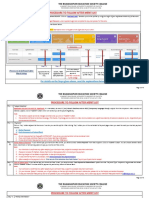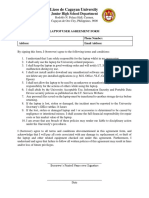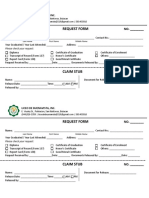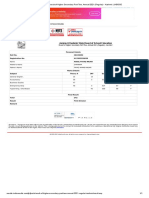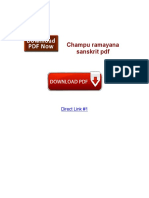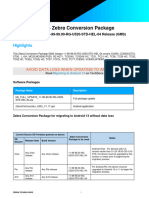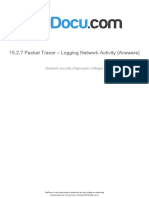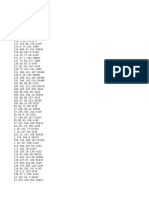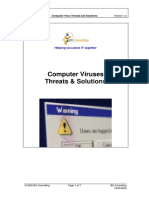0% found this document useful (0 votes)
61 views17 pagesSecurity Planning for Organizations
This document provides an overview of module 5 which covers planning for security. It discusses the importance of having an information security plan to protect data and comply with regulations. An effective plan includes policies, standards, practices, and contingency planning. Policies are the foundation for security efforts and come in different forms from enterprise-wide to system-specific. Standards provide details on complying with policies. Together, policies and standards guide an organization's information security program and protection of their assets.
Uploaded by
Justine DGCopyright
© © All Rights Reserved
We take content rights seriously. If you suspect this is your content, claim it here.
Available Formats
Download as PDF, TXT or read online on Scribd
0% found this document useful (0 votes)
61 views17 pagesSecurity Planning for Organizations
This document provides an overview of module 5 which covers planning for security. It discusses the importance of having an information security plan to protect data and comply with regulations. An effective plan includes policies, standards, practices, and contingency planning. Policies are the foundation for security efforts and come in different forms from enterprise-wide to system-specific. Standards provide details on complying with policies. Together, policies and standards guide an organization's information security program and protection of their assets.
Uploaded by
Justine DGCopyright
© © All Rights Reserved
We take content rights seriously. If you suspect this is your content, claim it here.
Available Formats
Download as PDF, TXT or read online on Scribd
/ 17






